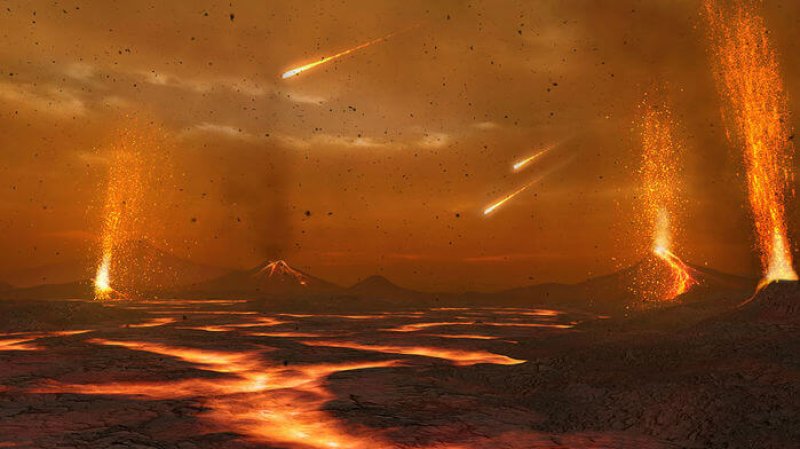A cataclysm may have jump-started life on Earth. A new scenario suggests that some 4.47 billion years ago—a mere 60 million years after Earth took shape and 40 million years after the moon formed—a moon-size object sideswiped Earth and exploded into an orbiting cloud of molten iron and other debris.
…
After things cooled down, simple organic molecules began to form under the blanket of hydrogen. Those molecules, some scientists think, eventually linked up to form RNA, a molecular player long credited as essential for life’s dawn. In short, the stage for life’s emergence was set almost as soon as our planet was born.
That scenario captivated participants at an October 2018 conference here, where geologists, planetary scientists, chemists, and biologists compared notes on the latest thinking on how life got its start. No rocks or other direct evidence remain from the supposed cataclysm. Its starring role is inferred because it would solve a bevy of mysteries, says Steven Benner.
…
Researchers still disagree, for example, over which chemical path most likely gave rise to RNA and how that RNA combined with proteins and fats to form the earliest cells. Nevertheless, Benner says, “The field is in a new place. There is no question.”
Read full, original post: How an ancient cataclysm may have jump-started life on Earth































